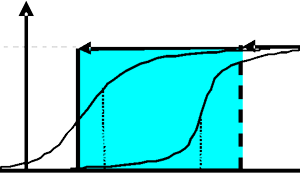Peculiarities of the large numbers law in conditions of disturbances of statistical stability
DOI:
https://doi.org/10.3103/S0735272711070053Keywords:
disturbance of statistical stability, random quantity, hyper-random quantity, law of large numbersAbstract
Peculiarity of the low of large numbers in conditions of disturbance of statistical stability is researched. It is found that for random sequences sample average may converges to definite number, tends to plus or minus infinity, or fluctuates in definite interval. Number theorems describe the low of large numbers for hyper–random sequences are proved. It is found that sample average of hyper–random variable may converges to definite number, to a set of definite numbers, fluctuates in non–intersecting intervals of conditional boundaries, fluctuates in a interval of unconditional boundaries, or tends to plus or minus infinity. Differences in convergent variants of random and hyper–random sequences must be taken into account when researches of radio devices and systems are led.
References
- А. N. Kolmogorov, Basic Notions of Probability Theory (ONTI, Moscow, 1936; 1974) [in Russian].
- I. I. Gorban, Theory of Hyper-Random Events (IPMMS NANU, Kyiv, 2007) [in Russian], http://ifsc.ualr.edu/jdberleant/intprob/.
- I. I. Gorban, “Hyper–Random Phenomena: Definition and Description,” ITA 15, No. 3, 203 (2008).
- I. I. Gorban, Theory of Hyper-Random Events: Physical and Mathematical Basics (Naukova Dumka, Kyiv, 2011) [in Russian].
- I. I. Gorban, “Disturbances of statistical stability in physical processes,” Matematicheskie Mashiny i Sistemy, No. 1, 171 (2010).
- I. I. Gorban, “Disturbance of Statistical Stability,” Information Models of Knowledge (ITHEA, Kiev–Sofia, 2010), pp. 398–410.
- B. V. Gnedenko, Lectures on Probability Theory (IFML, Moscow, 1988) [in Russian].
- І. І. Gorban, Probability Theory and Mathematical Statistics for Scientific Workers and Engineers (IPMMS NANU, Kyiv, 2003) [in Ukrainian], http://www.immsp.kiev.ua/perspages/gorban_i_i/index.html.
- S. P. Sharyi, Finite-Dimensional Interval Analysis (Institute of computational technologies, 2010) [in Russian], http://www.nsc.ru/interval.


